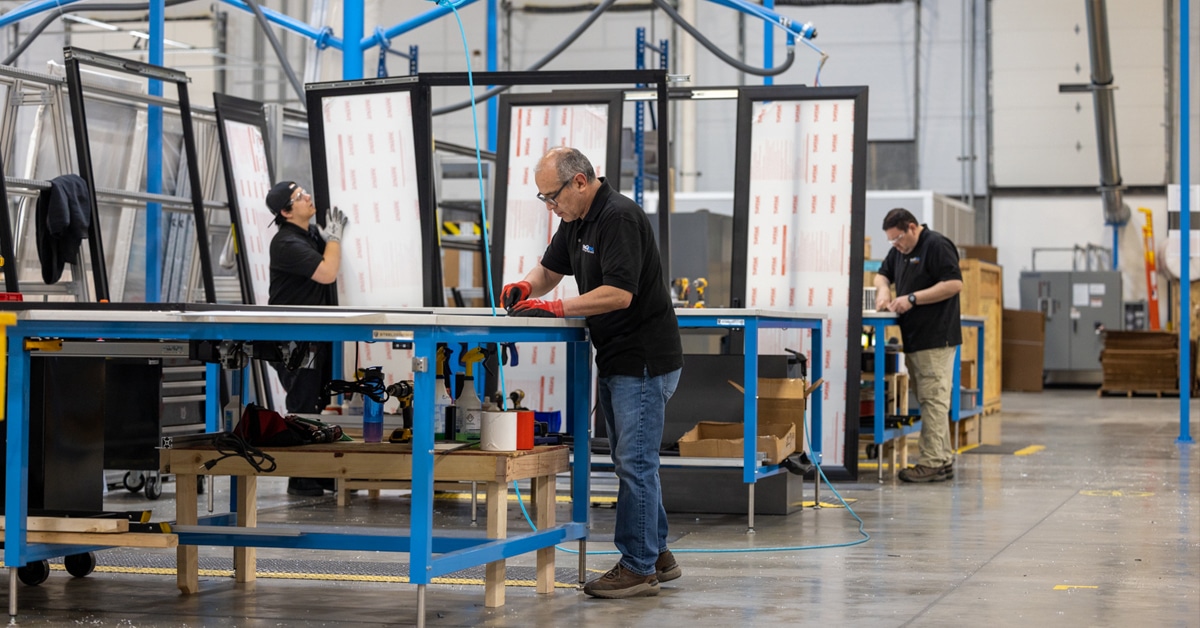Article by Shane Kilfoil, Subzero Engineering President
In today’s fast-paced business environment, scalability is not just a buzzword; it’s a necessity. Entrepreneurs often get trapped in the daily grind of running their businesses, neglecting to put in place the systems, procedures, and people needed for sustainable growth. Without this foundation, companies hit bottlenecks, suffer inefficiencies, and face the risk of stalling or failing.
To be able to adapt and expand operations as your business grows is not just about adding employees or customers. Sure, that’s the main target, but what about the processes, systems or infrastructure to successfully and sustainably manage your customer needs?
Operational scalability cuts across all aspects of the business. It’s too easy to just focus on the production line if you’re a manufacturer. Sales and financial operations, through to supply chain operations also need to be considered and scaled up to meet the customer’s needs in a timely fashion. It’s vital to ensure that as the business evolves and grows, it doesn’t compromise on quality or efficiency across any aspect of the operation.
The investment of time and energy resources
The term operational scalability is personal to your business, the growth and evolution of it and where you see yourself being in X number of years.
For profitable growth, investing time and effort into your processes, your systems and the people that drive those processes are vitally important. If you haven’t set the groundwork, then when growth opportunities come along you might end up finding that the company is scrambling. This is not sustainable. I often use the analogy of comparing ourselves to a restaurant. You know how many meals you can make and on occasion you have a rush. You may be able to hire one or two extra people temporarily because you know that during this occasional rush period, you can meet the excess demand. That’s great for the short term, but as a company in a high-growth environment, you would need to be able to support that rush every day, every week, every month. And that becomes very hard to do. Most people can do a heavy lift for perhaps a week but then employees start getting tired. People start getting sick.
The organization needs to be set up to cater for those demand spikes, and then scale up and move to where the demand is coming from. A good foundation allows you to either quickly scale or absorb spikes without too much issue and sustainably maintain that through the course of your business.
Scaling up
We recently moved Simplex from a California-based manufacturing operation to our new Salt Lake City facility. It wasn’t that the California operation was operating poorly, in fact, they were a pretty efficient operation. But as we looked at its ability to scale, we realized we had some physical constraints in that the building was not large enough or set up as we needed. We also recognized that many of the commodities used are very similar between Simplex and Subzero, so we decided to move both businesses under a single 155,000 square foot facility giving the Simplex operation, which beforehand was restricted to a 40,000 square feet facility, room to grow.
Relocating allowed us to bring both businesses under a single roof. It gave us the option to scale the business significantly and allowed our engineering teams to manage a single supply chain. As an organization, we had to bring one business culture into another and help people adjust not just to the commercial side in terms of how they go to market with their customers, but also to what the culture was in Salt Lake City. Ultimately it was the right decision because it gave us the ability to scale our business and workforce during times of high demand. As an added advantage, there’s also been a cross-pollination of knowledge sharing and we now have a more cross-trained workforce. Should we ever get hit by another pandemic, this will allow us to continue our manufacturing capability without being heavily impacted.
Scalability or sustainability
Interpreting scalability can be difficult for many organizations. Maybe some businesses have got the term ‘operational scalability’ wrong because they haven’t been quite as sustainable in their business growth. For some, operational stability is about having a robust network so if there’s a supply shortage they can pull from another solution. For others, it’s more about how I grow. For me, operational sustainability is sustained, consistent growth. If I can scale it, can I maintain the same level of service and quality that my customer expects during that growth cycle? If I can’t, I’m probably not operationally robust enough. It’s a constant learning curve to consistently improve, and as you improve, you need to keep yourself nimble enough to meet demand or even a change in direction if there is demand for a new product. The organization needs to be set up both on the front end and the back end to support changes in demand capacity or changes in the customer’s direction.
Change management
It’s not just about the customer. It’s also about your employees. How do we keep the team motivated during these periods of scalability?
Trying to rally everyone around a common goal seems simple, but not everyone listens and learns the same way. Communication is key because once people understand, they’re often able to take it on board and help drive towards it. Effective communication and clear goal setting in driving operational scalability is essential for company-wide change. Understanding the purpose of tasks is essential for motivation and performance, and the successful implementation of new systems and processes relies heavily on the acceptance and adaptation of team members. Not everyone is comfortable with growth and change, however, self-managed, self-motivated and adaptable leaders who can handle change can be empowered with the responsibility to contribute to the organization’s growth.
Industry shifts
Covid accelerated the industry’s growth, emphasizing the importance of supply chain management and the ability to respond to changing demands quickly. At Subzero, we shifted towards greater flexibility in serving customers and the potential for addressing more esoteric requests due to increased capacity.
Operational sustainability and scalability are vital for growth and profits, and investing time, effort, and resources into processes, systems, and people is essential. But all the time you’re investing in these, a close eye needs to be kept on technology changes and clients’ demands. We’re currently looking at the role of AI in the data center industry and the challenges of integrating AI into systems while maintaining our sustainability goals. We need to plan for future infrastructure to support AI and other emerging technologies.
Our industry’s shift towards liquid cooling highlights challenges in terms of cost and scalability. I predict a hybrid solution will emerge, with traditional cooling methods used alongside liquid cooling, and we need to be sure that Subzero’s products will be scalable and adaptable to future requirements. Our ongoing journey towards becoming a total solutions provider focuses on sustainability and meeting customer needs, as well as the impact of rising interest rates on customers’ spending capabilities.




